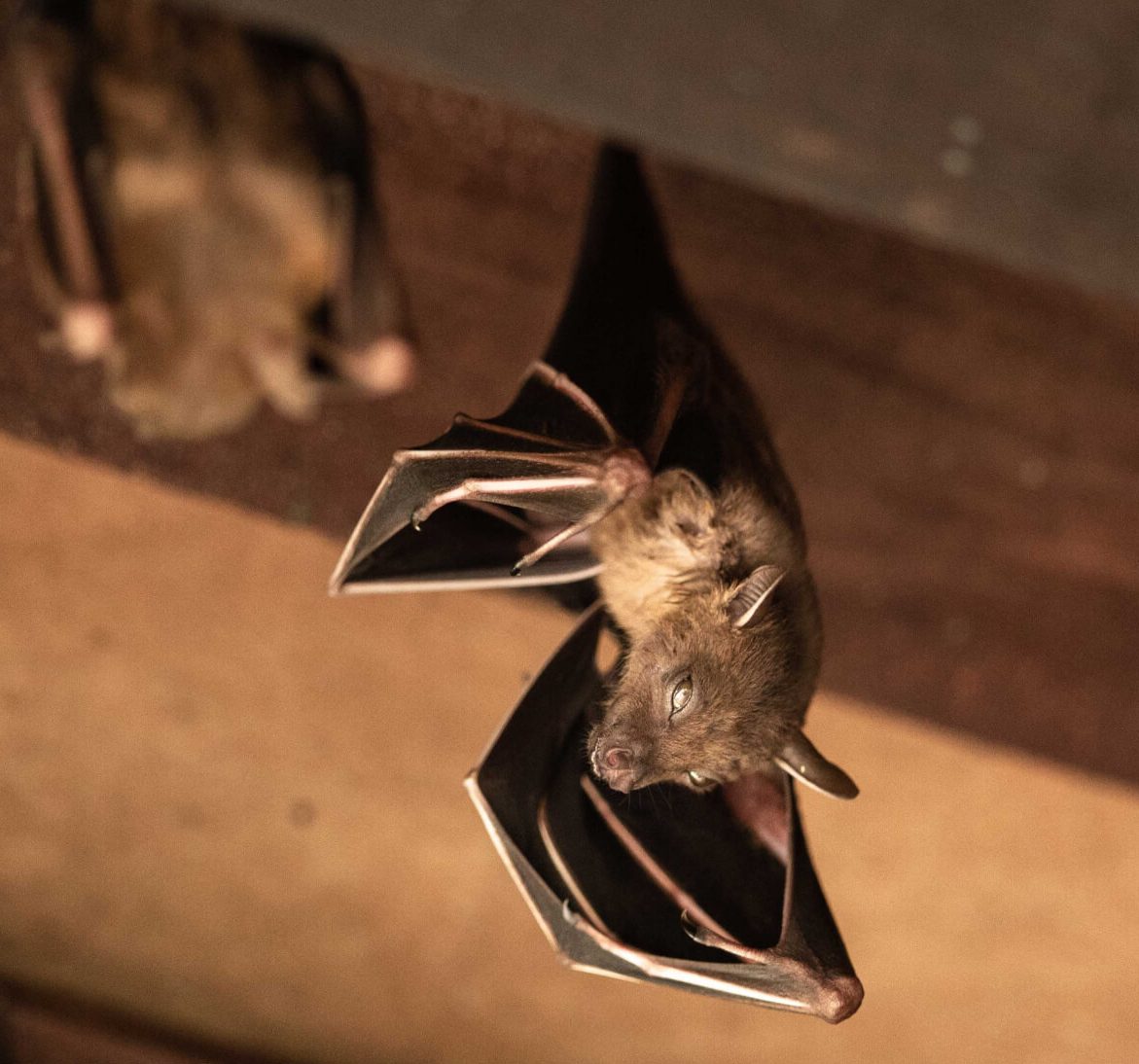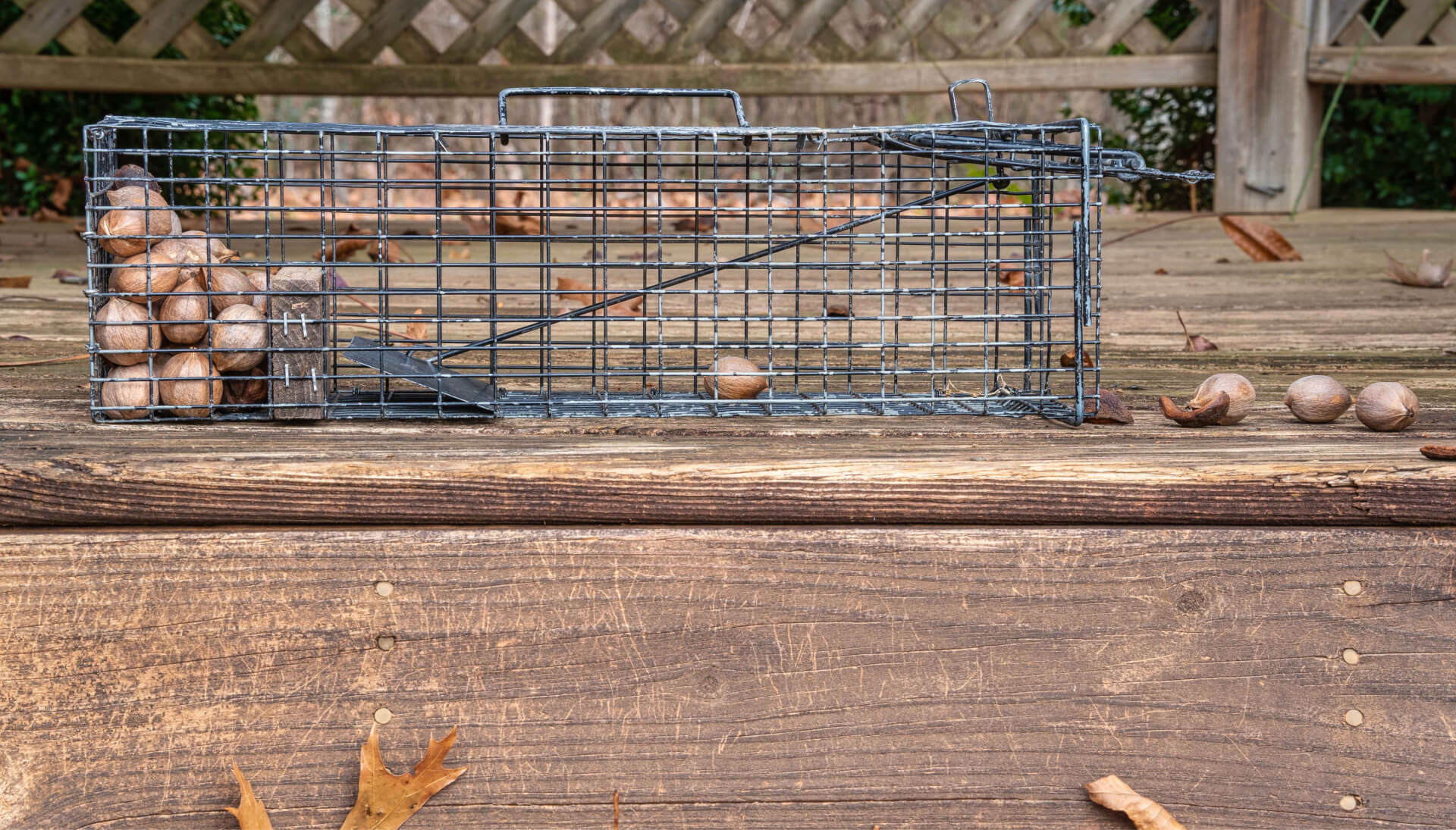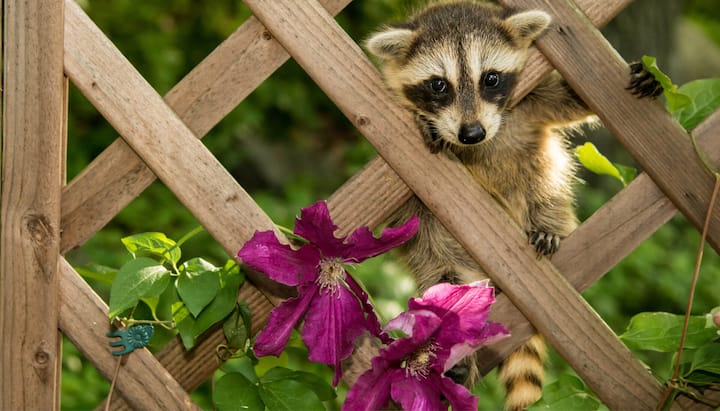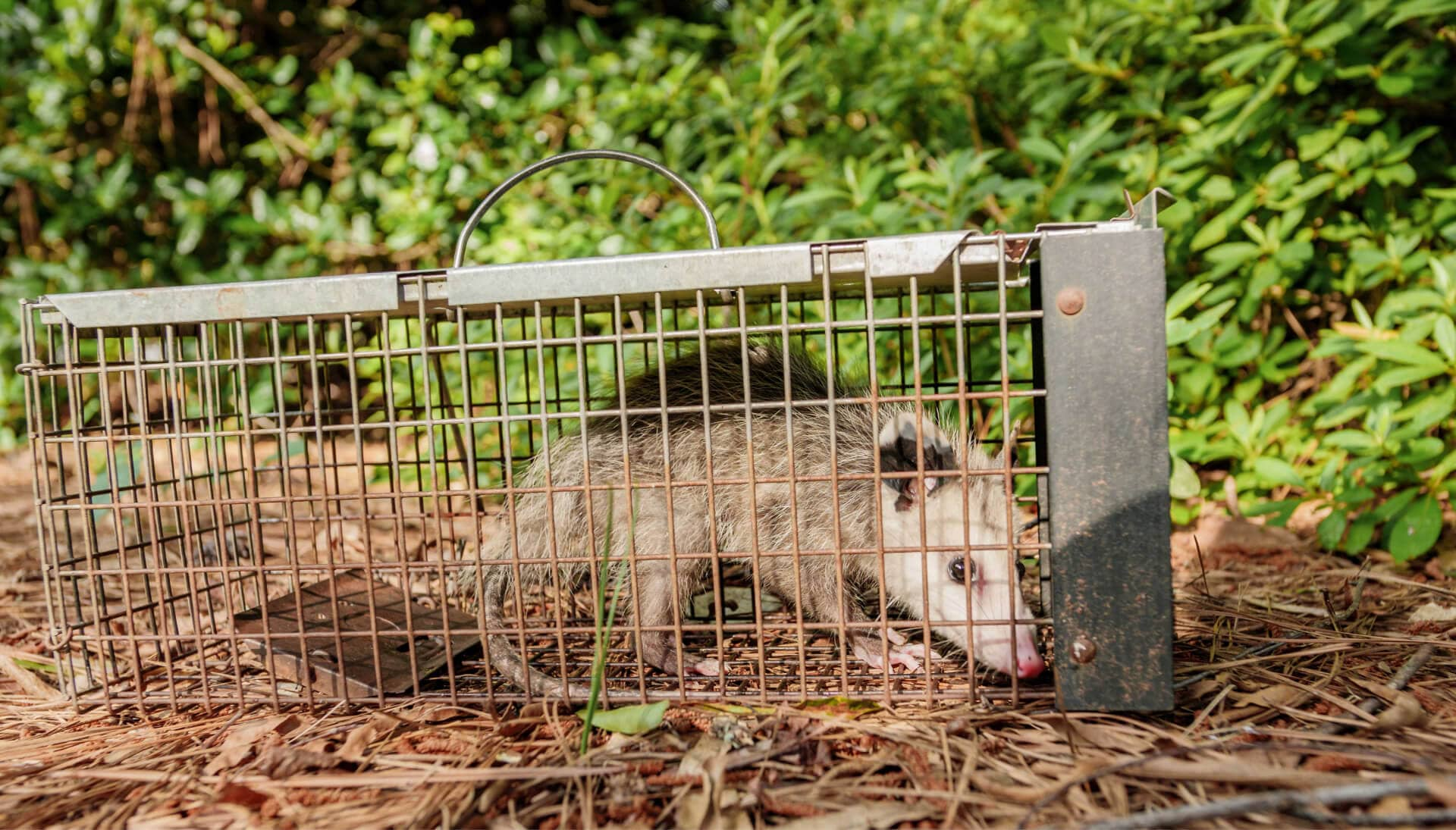Effective Wildlife Removal Strategies for Your Home
Dealing with unwanted wildlife on your property can be stressful. Wild animals can cause damage to your home, pose health risks, and create general disturbances. Understanding effective wildlife removal strategies is essential for protecting your property and ensuring the safety of your family.
Identifying Common Wildlife Intruders
Before you can implement effective wildlife removal, it’s important to identify the specific animals causing the problem. Common wildlife intruders include:
- Raccoons: Known for their intelligence and dexterity, raccoons often raid garbage cans and can enter homes through uncapped chimneys or weak points in the roof.
- Squirrels: These rodents can chew through wires, insulation, and wooden structures, causing significant damage.
- Opossums: While generally less destructive than raccoons or squirrels, opossums can still create a mess and may carry diseases.
- Skunks: Their defensive spray is a nuisance, and they may dig up lawns in search of insects.
- Birds: Birds can nest in attics or eaves, creating noise and leaving droppings.
- Snakes: Although many snakes are harmless, some can be venomous and pose a threat.
- Rodents (mice & rats): Can transmit diseases, contaminate food and cause structural damage by gnawing through wood and electrical wires.
Implementing Preventative Measures
Prevention is key to avoiding wildlife problems. Here are several steps you can take:
- Secure Garbage Cans: Use tight-fitting lids and consider storing cans in a garage or shed.
- Seal Entry Points: Inspect your home’s foundation, roof, and siding for any cracks or holes. Seal these openings with caulk, steel wool, or metal flashing.
- Trim Trees and Shrubs: Keep branches trimmed away from your roof to prevent squirrels and other animals from gaining access.
- Remove Food Sources: Clean up fallen fruit, spilled birdseed, and other potential food sources.
- Install Fencing: A sturdy fence can deter larger animals from entering your property.
- Maintain Your Yard: Keep your grass mowed and remove debris piles where animals can hide.
Safe and Humane Wildlife Removal Techniques
When wildlife removal becomes necessary, it’s important to use safe and humane methods. Avoid using poisons or lethal traps, as these can harm non-target animals and pose risks to pets and children. Consider these options:
- Live Trapping: Set live traps baited with appropriate food to capture the animal. Check traps frequently and release captured animals in a suitable, remote location (check local regulations regarding relocation).
- One-Way Doors: Install one-way doors over entry points to allow animals to exit but prevent them from re-entering.
- Professional Assistance: If you’re uncomfortable handling wildlife removal yourself, or if the animal is potentially dangerous, contact a qualified wildlife control professional.
Post-Removal Actions
After removing wildlife, it’s crucial to take steps to prevent future infestations:
- Clean and Disinfect: Thoroughly clean and disinfect any areas where animals have been present to remove odors and pathogens.
- Repair Damage: Repair any damage caused by the animals, such as chewed wires or damaged insulation.
- Monitor for Re-entry: Keep an eye out for any signs of returning wildlife and take immediate action to address the problem.
By following these wildlife removal strategies, you can effectively protect your home and property from unwanted animal intruders.
Signs that you need professional wildlife removal
Protecting Your Property with Expert Wildlife Solutions
Unwanted wildlife can cause significant damage and pose health risks to your family and property. From structural damage to the spread of diseases, the presence of animals like rodents, raccoons, and bats requires professional intervention. We specialize in providing effective and humane wildlife control solutions tailored to your specific needs.
Why Choose Professional Wildlife Control?
Attempting to handle wildlife problems on your own can be dangerous and often ineffective. Many animals carry diseases and can become aggressive when threatened. Our trained technicians have the knowledge, experience, and equipment to safely and efficiently remove wildlife from your property, minimizing risks and preventing future infestations.
- Safety: Protect yourself and your family from potential harm.
- Effectiveness: Ensure complete removal and prevent recurring issues.
- Humane Approach: We prioritize the well-being of animals while resolving the problem.
- Long-Term Solutions: We identify and address the root causes of wildlife intrusions.
Our Comprehensive Wildlife Control Services
We offer a wide range of services to address various wildlife issues, including:
Animal Removal
Our experts use humane trapping and removal techniques to safely relocate animals from your property. We handle a variety of species, including:
- Raccoons
- Squirrels
- Rodents (rats, mice)
- Opossums
- Snakes
Damage Repair
Wildlife can cause extensive damage to your home, including chewed wires, damaged insulation, and compromised structures. We provide comprehensive repair services to restore your property to its original condition. Our services include:
- Insulation replacement
- Roof repair
- Siding repair
- Wiring repair
Prevention Services
Preventing future wildlife intrusions is crucial for long-term protection. We offer a range of preventative measures to safeguard your property, including:
- Sealing entry points
- Installing deterrents
- Reinforcing vulnerable areas
Bat Exclusion
Bats in your attic can lead to significant problems, including guano buildup, which poses health risks. Our bat exclusion services ensure the safe and humane removal of bats from your property. We use specialized techniques to prevent them from returning, such as one-way doors that allow bats to exit but not re-enter. After the **bat exclusion** process, we seal all entry points to ensure long-term prevention, protecting your property and family.
Protect Your Home Today
Don’t let unwanted wildlife take over your property. Contact us today for a comprehensive inspection and customized solution to your wildlife problem. We are committed to providing safe, effective, and humane wildlife control services.


Get local estimates
Effective Rat Extermination for a Safe Home
Dealing with a rat infestation can be stressful and pose health risks. Understanding rat behavior and implementing effective rat extermination strategies are essential for maintaining a safe and healthy home environment. This section provides practical guidance on identifying rat problems, implementing proven extermination methods, and preventing future infestations.
Identifying a Rat Infestation
Early detection is key to successful rat extermination. Rats are nocturnal, so you’re more likely to notice signs of their presence rather than seeing them directly. Common indicators include:
- Droppings: Small, dark pellets often found near food sources or nesting areas.
- Gnaw Marks: Rats constantly gnaw to keep their teeth sharp, leaving marks on wood, plastic, and even electrical wires.
- Nesting Materials: Shredded paper, fabric, or other soft materials used to build nests in hidden areas.
- Grease Marks: Dark smudges along walls and floors caused by rats rubbing their oily fur against surfaces.
- Unusual Noises: Scratching, scurrying, or squeaking sounds, especially at night.
- Footprints or Tail Drags: Visible in dusty areas or near food spills.
- Strong Odor: A musky smell that indicates a significant infestation.
Effective Rat Extermination Methods
Once you’ve confirmed a rat infestation, it’s important to act quickly. Several rat extermination methods are available, each with its own advantages and disadvantages:
Trapping
Trapping is a safe and effective method, especially for smaller infestations. There are two main types of traps:
- Snap Traps: These traps use a spring-loaded bar to quickly kill rats. They are inexpensive and readily available. Bait them with peanut butter, cheese, or bacon. Place traps along walls, behind appliances, or in areas where you’ve seen rat activity. Check traps regularly and dispose of dead rats properly.
- Live Traps: These traps capture rats without harming them. Bait the trap and check it daily. If you catch a rat, release it at least five miles away from your home to prevent it from returning. Be aware of local regulations regarding the relocation of wildlife.
Baiting
Baiting involves using poisoned bait to kill rats. This method is effective for larger infestations but requires careful handling to avoid accidental poisoning of pets or children. Use tamper-resistant bait stations to keep bait secure and away from non-target animals. Place bait stations in areas where rats are active. Monitor bait consumption and replenish as needed. Always follow the manufacturer’s instructions and safety precautions.
Professional Rat Extermination Services
For severe or persistent infestations, consider hiring a professional wildlife control service. Professionals have the expertise, equipment, and access to specialized products to effectively eliminate rats and prevent future problems. They can also identify entry points and provide recommendations for sealing them off. Professional services often offer guarantees and follow-up treatments to ensure complete rat extermination.
Preventing Future Rat Infestations
Prevention is key to keeping your home rat-free. Implement these strategies to make your property less attractive to rodents:
- Seal Entry Points: Inspect your home’s foundation, walls, and roof for cracks, holes, or gaps. Seal these openings with caulk, steel wool, or metal flashing. Pay attention to areas around pipes, vents, and utility lines.
- Eliminate Food Sources: Store food in airtight containers and clean up spills promptly. Keep garbage cans tightly sealed and dispose of trash regularly. Avoid leaving pet food out overnight.
- Reduce Clutter: Remove piles of newspapers, cardboard boxes, and other clutter that can provide nesting sites for rats. Store firewood away from your home’s foundation.
- Maintain Your Yard: Keep your lawn mowed and trim shrubs and trees away from your home. Clear away fallen leaves and debris that can provide shelter for rats.
- Regular Inspections: Periodically inspect your home for signs of rat activity. Address any issues promptly to prevent a full-blown infestation.
By taking proactive steps to identify, eliminate, and prevent rat infestations, you can protect your home and family from the health risks and property damage associated with these pests. Whether you choose to implement DIY rat extermination methods or hire a professional, remember that a comprehensive approach is essential for long-term success. Prioritizing rat extermination is an investment in the safety and well-being of your household.
Get In TouchWildlife Intrusion: Assessing and Restoring Your Property
Discovering signs of wildlife intrusion on your property can be unsettling. Beyond the immediate concern of animal presence, the potential for structural damage and health hazards is significant. Addressing these issues promptly and effectively is essential to safeguard your home and family.
Identifying Wildlife Damage
Before initiating any repairs, accurately assessing the extent and nature of the damage is crucial. Common indicators of wildlife activity include:
- Entry Points: Holes in siding, damaged roofing, or compromised foundation areas.
- Nesting Materials: Shredded paper, insulation, or fabric used for nesting, often found in attics or crawl spaces.
- Droppings and Odors: Unexplained fecal matter or unusual smells emanating from hidden areas.
- Gnaw Marks: Evidence of chewing on wood, wires, or pipes.
The Importance of Professional Wildlife Damage Repair
While some minor repairs may seem manageable on your own, professional intervention offers several key advantages:
- Thorough Assessment: Trained technicians can identify all entry points and assess the full extent of the damage, including areas not readily visible.
- Safe Removal: Professionals use humane and effective methods to remove wildlife, minimizing stress to the animals and preventing future infestations.
- Comprehensive Repairs: Qualified contractors can perform necessary structural repairs, ensuring long-term protection against further wildlife intrusion.
- Sanitization and Decontamination: Wildlife can carry diseases and parasites. Professionals can safely sanitize affected areas, eliminating health risks.
Our Wildlife Damage Repair Process
Our approach to wildlife damage repair is designed to provide comprehensive and lasting solutions:
- Inspection: A detailed inspection of your property to identify all points of entry and assess the extent of the damage.
- Humane Removal: Safe and ethical removal of all wildlife inhabitants.
- Repair and Restoration: Sealing entry points, repairing structural damage, and restoring affected areas to their original condition. This includes Wildlife Damage Repair.
- Sanitization: Thorough cleaning and disinfection to eliminate health hazards and odors.
- Prevention: Implementing preventative measures to discourage future wildlife intrusions.
Protecting Your Home from Future Intrusions
Once repairs are complete, taking proactive steps to prevent future wildlife problems is essential. Consider these measures:
- Seal Potential Entry Points: Seal cracks and openings in your foundation, siding, and around pipes and wires.
- Maintain Your Yard: Keep your lawn trimmed, remove brush piles, and ensure proper drainage.
- Secure Trash Cans: Use tightly sealed trash cans and store them in a secure location.
- Professional Consultation: Schedule regular inspections with a wildlife control professional to identify and address potential problems early on.
Why go with Wildlife Control Pittsburgh?

Wildlife Control Services
Dealing with unwanted wildlife on your property can be stressful and potentially hazardous. From raccoons rummaging through your trash to squirrels nesting in your attic, these animals can cause damage and pose health risks. Understanding the common issues and knowing how to address them effectively is essential for maintaining a safe and healthy environment.
Common Wildlife Problems
Many homeowners encounter similar wildlife challenges. Raccoons are notorious for their scavenging behavior, often tipping over garbage cans and creating messes. Rodents, such as mice and rats, can infest homes, chewing through wires and contaminating food supplies. Birds may build nests in gutters, leading to water damage. Larger animals, like deer, can destroy gardens and landscaping. Each of these scenarios requires a specific approach to ensure the animals are removed safely and humanely.
Our Approach to Wildlife Control
Our wildlife control methods prioritize both effectiveness and compassion. We begin with a thorough inspection of your property to identify the type of animal, the extent of the infestation, and potential entry points. Based on this assessment, we develop a customized plan to remove the animals and prevent future problems. Our techniques include humane trapping, exclusion methods, and habitat modification. We also offer advice on how to make your property less attractive to wildlife.
Why Choose Professional Wildlife Control?
Attempting to handle wildlife problems on your own can be risky. Many animals carry diseases and may bite or scratch if they feel threatened. Additionally, some DIY removal methods can be ineffective or even harmful to the animals. Professional wildlife control technicians have the knowledge, experience, and equipment to safely and humanely resolve these issues. They can also provide valuable insights into preventing future infestations. For example, proper raccoon removal requires understanding their behavior patterns and implementing strategies to deter them from returning. By choosing professionals, you can protect your property and ensure the well-being of both your family and the wildlife.
Contact Us Today
Wildlife Management Solutions
Discover effective strategies for managing wildlife and resolving conflicts with animals on your property. Understanding wildlife behavior and implementing proactive measures are key to preventing damage and ensuring a safe environment for your family and pets. We offer insights and guidance to help you navigate the complexities of wildlife interactions.
Identifying Common Wildlife Concerns
Many homeowners face challenges with various types of wildlife, including rodents, insects, and larger animals. Recognizing the signs of their presence is the first step in addressing the problem. Common indicators include:
- Unexplained noises in attics or walls
- Droppings or urine odors
- Damage to gardens or landscaping
- Nesting materials found indoors
Effective Prevention Techniques
Preventing wildlife from entering your property involves a multi-faceted approach. Sealing potential entry points, maintaining a clean environment, and implementing deterrent strategies can significantly reduce the likelihood of wildlife issues.
- Seal cracks and openings in foundations, walls, and roofs.
- Trim trees and shrubs to prevent animals from accessing your roof.
- Secure garbage cans and compost bins to eliminate food sources.
- Consider using motion-activated lights or ultrasonic deterrents.
Addressing Mice Control Challenges
Dealing with mice requires targeted strategies to eliminate existing infestations and prevent future occurrences. Effective mice control involves a combination of trapping, baiting, and exclusion techniques. Understanding their behavior and identifying entry points are essential for successful eradication. Regular inspections and maintenance can help prevent future problems.
Humane Removal and Relocation
In many cases, humane removal and relocation are the preferred methods for dealing with wildlife. This approach involves safely capturing animals and releasing them in a suitable habitat away from your property. It’s important to consult with local wildlife authorities to ensure compliance with regulations and ethical practices.
Seeking Professional Assistance
For complex wildlife issues, seeking professional assistance is often the most effective solution. Experienced wildlife control specialists can assess the situation, implement appropriate strategies, and provide ongoing support to ensure long-term resolution. They also have the tools and knowledge to handle wildlife safely and humanely.
Wildlife Control Services
Unexpected wildlife intrusions can disrupt your peace of mind and pose risks to your property and well-being. We specialize in humane and effective wildlife control solutions, tailored to address a wide range of animal-related issues. Our experienced team is equipped to handle everything from common nuisance animals to more complex wildlife situations, ensuring your home or business is safe and secure.
Our Comprehensive Approach
We believe in a holistic approach to wildlife management. This means we not only remove the immediate threat but also implement strategies to prevent future occurrences. Our process includes:
- Detailed Inspection: A thorough assessment of your property to identify entry points, nesting sites, and the type of wildlife involved.
- Humane Removal: Utilizing safe and ethical methods to remove animals from your premises, prioritizing their well-being and adhering to all local regulations.
- Preventative Measures: Sealing entry points, installing barriers, and providing advice on habitat modification to deter future wildlife invasions.
Common Wildlife Concerns
We address a variety of wildlife issues, including:
- Rodents: Mice, rats, and squirrels can cause significant damage to structures and contaminate food sources.
- Birds: Nuisance birds like pigeons and starlings can create unsanitary conditions and damage property.
- Raccoons and Opossums: These nocturnal creatures often raid garbage cans and can become aggressive if they feel threatened.
- Snakes: While some snakes are harmless, others can pose a danger to pets and people.
Emergency Wildlife Control
Some wildlife situations require immediate attention. Our emergency wildlife control services are available 24/7 to address urgent issues such as:
- An animal trapped inside your home or business.
- Aggressive or injured wildlife on your property.
- A large infestation that poses an immediate health risk.
We understand the stress and anxiety that wildlife problems can cause. Our goal is to provide prompt, reliable, and compassionate service, restoring your peace of mind and protecting your property from further damage. With our emergency wildlife control services, you can rest assured that we are here to help whenever you need us.
Why Choose Us?
Choosing the right wildlife control company is essential for effective and long-lasting results. We stand out because of our:
- Experience and Expertise: Our team has extensive knowledge of local wildlife and proven techniques for managing their behavior.
- Humane Practices: We prioritize the ethical treatment of animals and use methods that minimize stress and harm.
- Customer Satisfaction: We are committed to providing exceptional service and ensuring our clients are fully satisfied with our work.
Don’t let wildlife problems disrupt your life. Contact us today to schedule an inspection and learn more about our comprehensive wildlife control solutions. We are dedicated to providing a safe and healthy environment for your home or business, with our emergency wildlife control ready when needed.